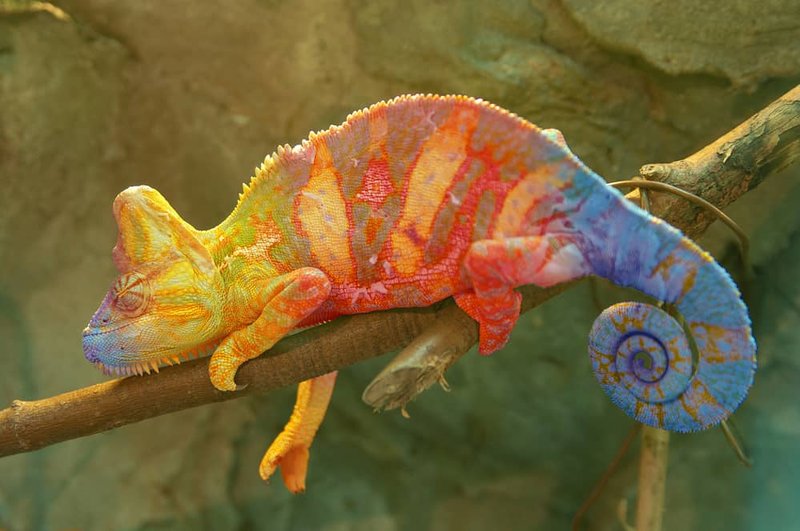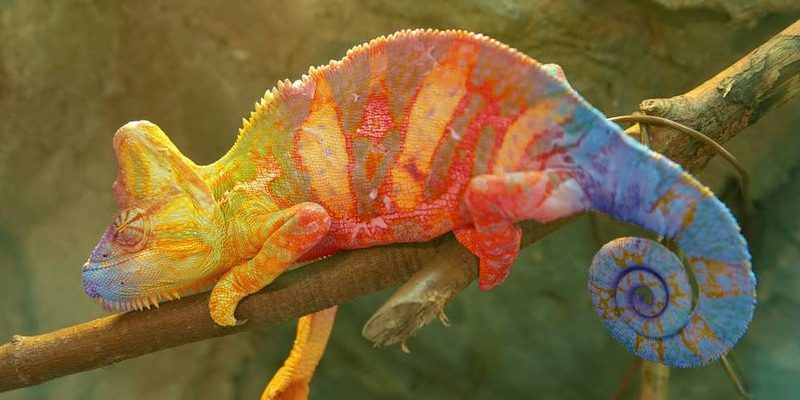
The flap-necked chameleon, native to Africa, has some remarkable features that make it stand out in the animal kingdom. But when it comes to the ability to regenerate lost body parts, the story becomes a bit complicated. Some reptiles have the ability to regrow tails, which can be a handy survival tactic. However, chameleons are a unique case. Let’s dig into how they compare to other reptiles and what this means for the flap-necked chameleon.
Understanding Limb Regeneration in Reptiles
Regeneration is the process by which some animals can regrow lost body parts. While many reptiles, like certain lizards, can regrow their tails, the mechanics behind this process vary significantly across species. For example, when a lizard loses its tail, it can regenerate a new one, often as a way to escape predators. This ability is largely due to specialized cells called *blastemal cells*, which play a crucial role in forming new tissues.
However, not all reptiles possess this ability. For instance, crocodilians and turtles do not regenerate limbs or tails. This distinction leads us to wonder about chameleons and where they fit on this spectrum. The flap-necked chameleon doesn’t show the same regenerative capabilities as some of their lizard relatives.
Can Flap-Necked Chameleons Regrow Tails?
The flap-necked chameleon is known for its striking appearance and unique behaviors rather than its regenerative abilities. Unfortunately, if you’re hoping to learn that these chameleons can regrow their tails, I have to be honest: they can’t. Unlike some lizards, when a flap-necked chameleon loses its tail, that’s it. The tail won’t grow back.
This lack of regeneration is tied to their biology. Chameleons, including the flap-necked variety, have a different structure than lizards that can regrow tails. Their tails, while useful for balance and defense, don’t have the same cellular mechanisms that allow for regeneration. If they lose a limb or tail, they can adapt, but they won’t regain what was lost.
The Importance of Tails in Chameleons
So, why does the tail matter for flap-necked chameleons? Their tails serve several essential functions. First, they provide balance. Chameleons are tree-dwelling creatures, often navigating branches and perches. A strong, functional tail helps them stabilize themselves while climbing.
Additionally, tails can play a role in communication and defense. For instance, if threatened, chameleons can puff themselves up and use their tails as a defense mechanism. Losing this vital tool can hinder their survival, as it affects both their agility and their capacity to ward off predators.
What About Limbs? Do Flap-Necked Chameleons Regrow Limbs?
Just as tails are crucial, so are the limbs of chameleons. The flap-necked chameleon uses its limbs for climbing, grasping, and holding onto branches. However, similar to their tails, if these chameleons lose a limb, they cannot regenerate it.
Imagine trying to navigate through trees without a leg or an arm. It would be incredibly challenging, to say the least! While they might learn to adapt to their circumstances, the absence of a limb can significantly impact their movements and overall lifestyle.
How Do Flap-Necked Chameleons Adapt After Losing Tails or Limbs?
Even though flap-necked chameleons can’t regrow their tails or limbs, they are remarkably adaptable. If they lose a tail, they have to rely more on their other abilities. They can take time to adjust their climbing techniques and use their bodies differently when perching.
In some cases, you might see them using their remaining limbs more actively to compensate for the loss. Chameleons are masters of camouflage and can often avoid detection from predators, which can sometimes give them an edge even after injury.
Comparing Regeneration: Chameleons vs. Other Reptiles
Let’s take a moment to compare the flap-necked chameleon with other reptiles that can regenerate. Some lizards, like green anoles, can regrow their tails after losing them. This ability is a fantastic survival mechanism, allowing them to escape predators while still having a chance to thrive in their habitats.
However, with chameleons, the lack of regeneration means they need to rely on different strategies, like camouflage. While it may seem like a drawback, their unique coloring and movement skills allow them to blend in with surrounding foliage, making them less likely to be spotted by potential threats.
Why Regeneration Matters in Nature
Understanding why some animals evolve the ability to regenerate while others don’t can provide insight into survival strategies. In environments where predators are common, having the ability to regrow lost limbs or tails can significantly influence an animal’s chance of survival.
For flap-necked chameleons, adapting through camouflage and climbing skills can be just as effective. It highlights nature’s creativity in solving problems—some creatures regrow, while others find alternative survival methods.
Final Thoughts on the Flap-Necked Chameleon’s Regenerative Abilities
In summary, the flap-necked chameleon doesn’t have the power to regrow its tail or limbs. While this may be disappointing to some, it’s a part of what makes these creatures unique. Their adaptations, vibrant colors, and clever survival strategies are just as fascinating as any regenerative ability.
The world of reptiles is rich and diverse, filled with amazing adaptations that help them survive. So, next time you see a flap-necked chameleon, remember that while it may not be able to regrow lost parts, it has its own incredible ways of thriving in the wild. Nature has a way of doing things that are just as impressive, and the flap-necked chameleon is no exception!

